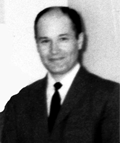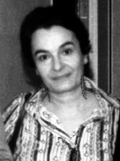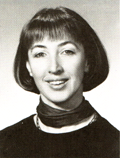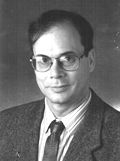
Liens de la barre de menu commune
Liens institutionnels
-
Bureau de la traduction
Portail linguistique du Canada
-
TERMIUM Plus®
-
Auteurs
- + Auverana, Iliana
- + Barber, Katherine
- + Blais, François
- + Boileau, Monique
- + Bucens, Vic
- + Cloutier, Yvan
- + Cole, Wayne
- + Collier, Linda P.
- + Collishaw, Barbara
- + Cormier, Chantal
- - Delisle, Jean
- Baudelaire translated in prison by a translation professor
- Fifty Years of Parliamentary Interpretation
- The good ship Update
- Through the Lens of History: Colourful personalities, perks and brilliant comebacks
- Through the Lens of History: French: The working language in the West
- Through the Lens of History: Historic, fateful or comical translation errors
- Through the Lens of History: Jean L’Heureux: Interpreter, false priest and Robin Hood
- Through the Lens of History: John Tanner, a white Indian between a rock and a hard place (I)
- Through the Lens of History: John Tanner, a white Indian between a rock and a hard place (II)
- Through the Lens of History: Joseph de Maistre or Alexander Pushkin? The confusion caused by Babel
- Through the Lens of History: Scheming Acadians and translators "dealt a blow to the head by fate"
- Through the Lens of History: Translating dominion as puissance: A case of absurd self-flattery?
- Voicewriting
- + Doumbia, Bréhima
- + Ethier, Sheila
- + Fitzgerald, Heather
- + Gariépy, Julie L.
- + Gawn, Peter
- + Ghearáin, Helena Ní
- + Guyon, André
- + Harries, Emma
- + Hug, Christine
- + Joe, Gregg
- + Jope, James
- + Lacroix, Kim
- + Laforge, Marc
- + Landry, Alain
- + Lapointe, Lucie
- + Lawrence, C.A.
- + Leighton, Heather
- + Lemieux, Claude
- + Leroux, Paul
- + Matsune, Heather
- + McClintock, Barbara
- + McNamer, Patrick
- + Mossop, Brian
- + Oslund, Richard
- + Ouimet, Nicole
- + Peck, Frances
- + Pontisso, Robert
- + Racicot, André
- + Roberts, David
- + Rodríguez, Nadia
- + Ross, Sheila M.
- + Roumer, Camilo
- + Samson, Emmanuelle
- + Sanders, Sheila
- + Schnell, Bettina
- + Senécal, André
- + Shatalov, Dmitry
- + Siemienska-Vachali, Maja
- + Sitarski, Mary
- + Skeete, Charles
- + Taravella, AnneMarie
- + Tautu, Doris
- + Urdininea, Frances
- + Vittecoq, Fanny
- + Wellington, Me Louise Maguire
Divulgation proactive
Avis important
La présente version de l'outil Favourite Articles a été archivée et ne sera plus mise à jour jusqu'à son retrait définitif.
Veuillez consulter la version remaniée de l'outil Favourite Articles pour obtenir notre contenu le plus à jour, et n'oubliez pas de modifier vos favoris!
La zone de recherche et les fonctionnalités
The good ship Update
Excerpt from La terminologie au Canada, histoire d’une profession, to be published in October 2008 by Linguatech, éditeur.
It is sobering to reflect on the number of in-house publications that, shortly after slipping their anchors amid general rejoicing, have subsequently been shipwrecked. They set sail for a long journey, but something goes badly wrong. Terminology Update, however, one of the Bureau’s flagships, has escaped that sad fate. Indeed, Terminology Update is the second oldest Canadian publication of its kind after Meta, which turned 50 in 2005. It is now 40 years old, having come out every quarter since 1968 like clockwork. In the year of its birth, avion-citerne, climatiseur, contraception, hallucinogène and imprimante made their appearance in the Petit Larousse illustré. Such were the coinages of the day.

Laurent Clément
In 1968, there was no such thing as a terminology course or textbook; terminological research methods were in an embryonic state; computerized term banks were not even a twinkle in anyone’s eye; and the work of the terminologist had yet to be defined. Nevertheless, the Translation Bureau of the Department of the Secretary of State launched an official terminology publication at the behest of the head of its Terminology Centre, Laurent Clément (1917-1987), a terminology pioneer who had entered the Bureau in Ottawa through its 1944 recruitment exam and been assigned to the Blue Book Division. In 1957, he was appointed chief at the Department of National Defence. In the 1950s, he was active in the Association technologique de langue française d’Ottawa (ATLFO") and in charge of its Bulletin, for which he wrote the column "Peut-être l’avez-vous oublié?" on the use of particular terms. This editorial experience no doubt inspired him to create L’Actualité terminologique. Laurent Clément was also the author of the NATO Glossary (BT-39), which went through two editions. After a two-year stint as head of the Terminology Centre, he was appointed Director of Development (1968), then put in charge of the Research and Development Directorate (1972). He retired in 1975.
In paying tribute to the late Pierre Daviault (1899-1964) and his successor, Denys Goulet (1901-1996), who had just retired (1967), the then superintendent, Henriot Mayer (1908-1982), drew a direct link between the work of these two pioneers of terminology and the new Bureau publication: "Both," he wrote, "sowed seeds that are continuing to bear fruit, and this journal is in line with the initiatives they themselves took or recommended" (Mayer, 1968). In his eyes, the raison d’être of L’Actualité terminologique was primarily to keep translators abreast of developments in the terminological and linguistic fields. But what does that mean?
The first begetters of the journal interpreted the word terminology very broadly. For them, it embraced nothing less than all the difficulties that arise for "whoever has to speak and write in French" or "whoever has an interest, however remote, in questions of language" ("Avis au lecteur," 1968). Quite the mandate! And, since it was not enough to know a subject’s terminology to translate correctly—they maintained—L’Actualité terminologique would also make room for the rules of style, grammar and proper usage. Their concept of "terminology"—which does not normally stretch quite so far, however—included grammatical, stylistic and normative issues. They treated terminological as a synonym of linguistic. As for the word actualité, they stretched its meaning in a no less surprising fashion: "It is advisable to take it in its broadest meaning, that is, everything that may, at a given moment, be of interest or value to a translator or writer. In translation, as in many other fields, there are questions that are always current" ("Avis au lecteur," 1968). The upshot of these two somewhat nebulous definitions is that L’Actualité terminologique was permitted to deal with all subjects, topical or not, terminological or not. This attests to two things: (a) at the time, there was no clear idea of what terminology really was; (b) the writers had no definite editorial policy. If the journal’s longevity had had to depend on the clarity of its initial orientation, the ship would have sunk at the quay!
That didn’t happen, fortunately. She kept afloat and cast off for an ocean voyage, but without any boatswain on board. It was not, indeed, until the November 1977 issue that the name of an editor-in-chief appeared on the masthead: this was Denise McClelland, who took on the job in 1975. "The earliest ’editors’ [… ] were also the bulletin’s main contributors. They drew their inspiration from notes carefully accumulated in the course of their long careers. The results appeared in L’Actualité terminologique under various titles, such as ’Petit lexique,’ ’Fiches de famille,’ etc." (McClelland, 1988). And we might add "Chronique des mots nouveaux" and "Équivalents." It was more or less left up to terminologists to write articles as they wished, and each one decided what subjects needed to be dealt with. These terminologist writers, who first got the journal moving, were named Albert Beaudet, Henri Dumas, Rachel Lévesque, André Saint-Martin, Gérard Proulx, but they wrote anonymously. "The principle of signing articles was not accepted at that time. Only contributions from outside the department were signed by their authors" (ibid.). During these, the glory years so to speak, there was no production schedule, and with the tendering system (mandatory in the public service), the journal might be laid out in an Ottawa print shop but printed in Vancouver, with all the risks that that entailed.
Looking at the actual contents, we have to say L’Actualité terminologique hadn’t anything very terminological about it during its first ten years of existence. It dealt with such subjects as how to set up a letter, the use of hyphens and quotation marks, and how to distinguish between French words like copie, double, exemplaire and original. And indeed, the calls for contributions published from time to time in the journal stated that articles could deal with grammar, stylistics, translation or documentation as well as the methodology of terminological research, although methodology was understood in the sense of "tricks of the trade." Theoretical contributions were minimal, and even a bit simplistic. For example, we read in an article by Albert Beaudet that the dépouilleur, i.e. the translator-terminologist who goes looking for a French equivalent, "should not reason," but, "pencil at the ready," should be content to "comb through his documentation" (Beaudet, 1971a; 1971b). And, suiting the action to the word, that is what Beaudet did in producing the "Équivalents" articles he authored over a period of seven years. Many of these equivalents (e.g. ash-tray stand: pied fumeur; freezer compartment : armoire de conservation) were controversial enough that the author had to defend his modus operandi (Beaudet, 1972). The column ceased to appear upon the author’s retirement in 1975, just as Denise McClelland was taking on the management of the journal.

Denise McClelland
That being said, a number of terminologists wrote good articles during this period when L’Actualité was trying to find its way. Cases in point are the contributions of Gérard Asselin, Jean Duval, Claude Lécrouart, Patrick F. McNamer and André Senécal, and those of the first translation graduates trained in the techniques of terminological research at the Université de Montréal under the guidance of Robert Dubuc. In this forum, graduates Claude Bédard, Charles Dupont, François Gauthier, Diane Michaud and Alain Morissette published their first works. The fact remains that, overall, the journal’s contents during its first ten years were a bit scattershot and of uneven quality.
In the 1980s, terminological activity got better organized at the Bureau, in particular thanks to the reorganization of terminology units that led to the creation of the Terminology and Documentation Branch (TDB) in 1975. Terminologists were now team members and worked on specific research projects. Slowly they began to specialize. At that point, the journal began to be used as a vehicle for dissemination of their terminological work. Articles became longer, more substantial, more methodical, more reliable—in short, more terminological. Four pages no longer sufficed. The number of pages increased to eight, then twelve. The editor-in-chief could now afford the luxury of planning future issues and drawing up a production schedule. An expanded reading committee evaluated contributions on the basis of precise criteria: the usefulness and originality of the subject, the solidity of its documentation, the rigour of the demonstration, and its formal quality. More and more Anglophone terminologists delivered the fruits of their labours on specialized terms in English; Mariam Adshead, Helen Hutcheson, Andy Lauriston, David Martin, Patrick McNamer and Lois Vincent wrote solid articles.
In 1981, to meet the requirements of Canada’s Official Languages Act, the monthly magazine acquired an official English name: Terminology Update. The two titles appeared one above the other on the front page. Research often dealt with more technical fields, such as "La décapeuse" [tractor-scrapers] (Yvan Cloutier), "La robotique" [robotics] (Georges Lurquin), "L’intelligence artificielle" [artificial intelligence] (Silvia Pavel), "La tectonique des plaques" [plate tectonics] (Dominique Bauthier and Georges Lurquin), "Les biotechnologies" [biotechnology] (Lise Boudreault-Lapointe), "Les vides de construction" [interstitial spaces] (Bruno Couture) and "L’épidémiologie" [epidemiology] (David Martin). The journal’s circulation rose to more than three thousand and reached as far as Europe, Africa and South America. International organizations’ translation departments became subscribers. After twenty years at sea, the crew of L’Actualité was seasoned and the craft was scudding before the wind.
At the beginning of the 1990s, with Michèle Valiquette at the helm, the publication became a semi-thematic quarterly review. It refocused itself to better meet the needs of its readership, still mainly consisting of translators, writers and terminologists. It explored new horizons and sought to stimulate discussion of the various aspects of the language professions. Among the first topics selected were medicine, engineering, terminotics, standardization and administration. The journal gave more and more space to neology, phraseology, linguistic development, computer-assisted translation, trends in the Francophonie, the emerging Internet, and language industries. In short, it kept up with the language news. In 1994, which marked the twenty-fifth anniversary of the Official Languages Act, the practice of publishing articles in their original version and in translation took root. Mere coincidence? The previous year, the journal had had a facelift and adopted a younger look. Its size ballooned further, sometimes reaching forty pages or more—ten times the size of the first few issues. The column "El Rincón Español" (the Spanish corner) was inaugurated in 1999; it contained articles on various aspects of the Spanish language by Bureau translators or terminologists and gave a voice to the terminologists working in Spanish, including Yolande Bernard, Genny González, Irma Nunan, Elisa Paoletti, Rafael Solís and Noris Vizcaíno. Sometimes the articles were by outside contributors, such as María Pozzi.


Michèle Valiquette Robert Bellerive
In September 2004, after plying the sea lanes of terminology, our doughty vessel embarked on the vast ocean of language news. Terminology Update thus became Language Update. For this new leg of the journey, she broke out the Translation Bureau colours to more clearly mark her allegiance. It was a completely new beginning. Martine Racette, editor-in-chief then and for the past five years, explained that "Language Update has shed its former title, which [had become] a little too precise over the years, to better reflect the variety of topics that it examines and the articles it has included for some time now on the evolution of the language industry in Canada and abroad" (2004). At the same time, a new column made its appearance: "Industry Insights." Incidentally, the word langagier used in the French title goes back to 1382, and up until the seventeenth century it meant "talkative." As a specialized term, it has come to mean "relating to language and the use made thereof" (1941). In Quebec, the word has been substantivized to refer to a "specialist in issues of language and terminology (in an organization, a company)" (Rey, 2000, II). This is thought to have been coined in the 1980s by Pierre Marchand, the then president of the Société des traducteurs du Québec (1981-1983) and co-founder of Circuit magazine (1983). Under the new name, our journal continued to offer rather diverse content. It still included fairly technical terminological studies, such as those on the law of trusts (Iliana Auverana), avalanche bulletins (Louise Claude) and wind power (Jean Le Page).
Year after year, the very well received columns of Frèdelin Leroux fils ("Mots de tête"), Frances Peck, André Racicot ("Traduire le monde"), Jacques Desrosiers and Katherine Barber ("Wordsleuth") have gone from strength to strength. These columns, allying wit, intelligence and humour with serious scholarship, are gems of professional writing. Our quarterly is a window on the development of the language industry, the activities of the Bureau and its involvement in the major issues that drive the industry’s development. It also provides information on new technologies, addresses current translation problems and tracks changing usage. Its "Glanures linguistiques," launched in 1997 by editor-in-chief Robert Bellerive (1950-1999), are addressed to "readers who may not have the time to systematically go through the good newspapers and major magazines, from Canada and abroad, that reflect the innovative character of the French language" (1997). In fact, it’s a new incarnation of the "Chronique des mots nouveaux." While the word language that has replaced terminology in the journal’s name is clearly the right word for its new orientation, some might find it regrettable that the generic adjective decreases the visibility of terminology as a discipline and a profession.
In 2007, Language Update’s circulation was 2,500 copies. Bureau staffers received it automatically. It was also read by more than 400 subscribers, including 352 in Canada and 75 abroad. Since the March 2008 issue, the journal has been distributed free of charge on the Bureau Web site, giving it still greater reach. More than ever, as the Bureau’s Chief Executive Officer Francine Kennedy put it, it will be "an outstanding writing and translation tool for a wide readership of language professionals and occasional writers" (2004). This was, in substance, what superintendent Henriot Mayer was hoping for forty years earlier (1968), when he expressed the wish that the new publication would help to expand translators’ and writers’ linguistic arsenal. Thus, we have come full circle, and L’Actualité has returned to its first purpose: to be a wide-ranging magazine, a language publication in the broadest sense of the word.
After four decades on the high seas, Language Update’s mission is still valid, and current events still dictate her changes of course. Among the Bureau’s writing assistance and standardization tools, this faithful mirror of the evolution of terminolinguistics within the organization holds pride of place beside the TERMIUM® linguistic database, the SVP terminology reference service, and our specialized glossaries and vocabularies. It is an excellent showcase for the Bureau’s many products and services.
In this anniversary year, it behooves us to pay homage to all the valiant captains who have succeeded one another at the helm.
The Editors
1968-1975 : At-large editors: Gérard Asselin, Albert Beaudet, Laurent Clément, Rachel Lévesque, Gérard Proulx.
1975-1979 : Denise McClelland.
1979-1981 : Pierre Goulet replaced Denise McClelland during her secondment to the project to draft the Guide du rédacteur de l’administration fédérale.
1981-1988 : Denise McClelland, until Vol. 21, No. 3.
1988-1996 : Michèle Valiquette. Christine Leonhardt edited No. 6 (Vol. 21) and No. 1 (Vol. 22).
1997-1999 : Robert Bellerive, until Vol. 32, No. 3.
1999- : Martine Racette.
All these captains and their crew exerted all their skill in sailing the ship throughout her long expedition, punctuated by innumerable stopovers. Let us wish Godspeed to the crew who are to guide her to her next port, namely her glorious fiftieth anniversary in 2018.
REFERENCES
"Avis aux lecteurs" (1968), L’Actualité terminologique, Vol. 1, No. 1, pp. 1–2.
BEAUDET, Albert (1971a), "Cheminement terminologique: fair-weather friend," L’Actualité terminologique, Vol. 4, No. 10, p. 3.
BEAUDET, Albert (1971b), "La traduction peut-elle s’enseigner et s’apprendre?", Le Droit, August 7, p. 4.
BEAUDET, Albert (1972), "’Nos’ équivalents," L’Actualité terminologique, Vol. 5, No. 2, pp. 1-3.
BELLERIVE, Robert (1997), "Glanures linguistiques," L’Actualité terminologique, Vol. 30, No. 1, p. 25.
KENNEDY, Francine (2004), "Introducing Language Update!", Language Update, Vol. 1, No. 1, p. 6.
MAYER, Henriot (1968), "Les voeux du Surintendant," L’Actualité terminologique, Vol. 1, No. 1, p. 1
McCLELLAND, Denise (1988), "Down Memory Lane," Terminology Update, Vol. 21, No. 1, pp. 2-4.
RACETTE, Martine (2004), "A Word from the Editor," Language Update, Vol. 1, No. 1, p. 3.
REY, Alain (dir.) (2000), Dictionnaire historique de la langue française. Paris: Les Dictionnaires Robert, 1992. 3 t.
© Services publics et Approvisionnement Canada, 2024
TERMIUM Plus®, la banque de données terminologiques et linguistiques du gouvernement du Canada
Outils d'aide à la rédaction – Favourite Articles
Un produit du Bureau de la traduction


